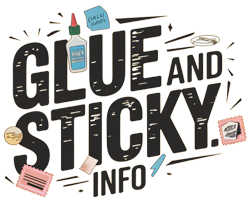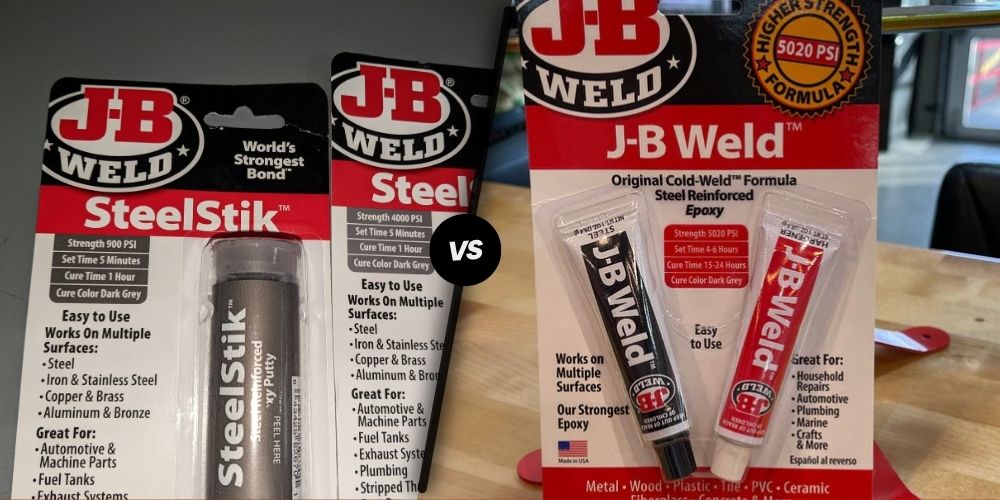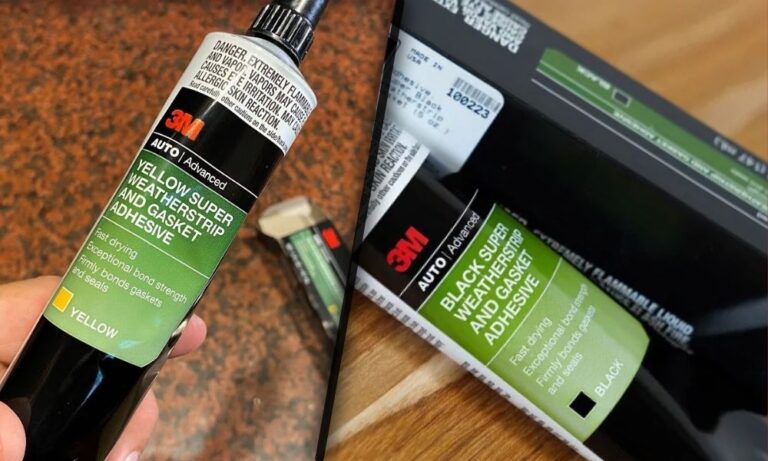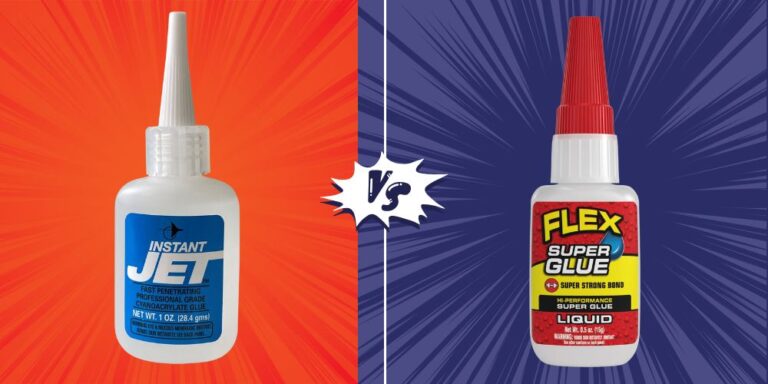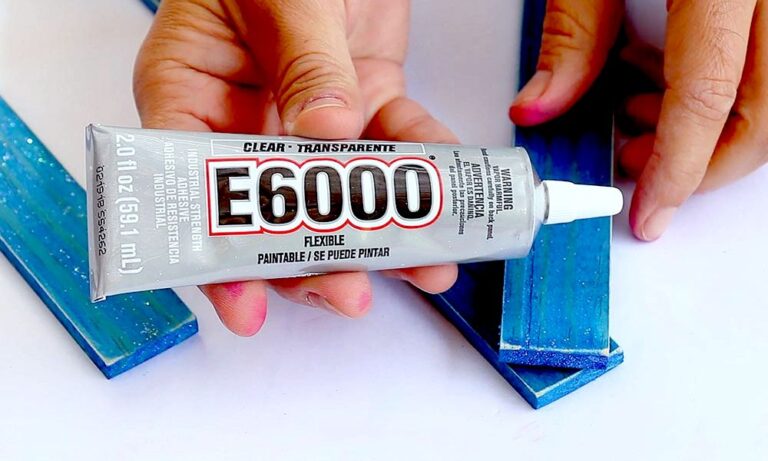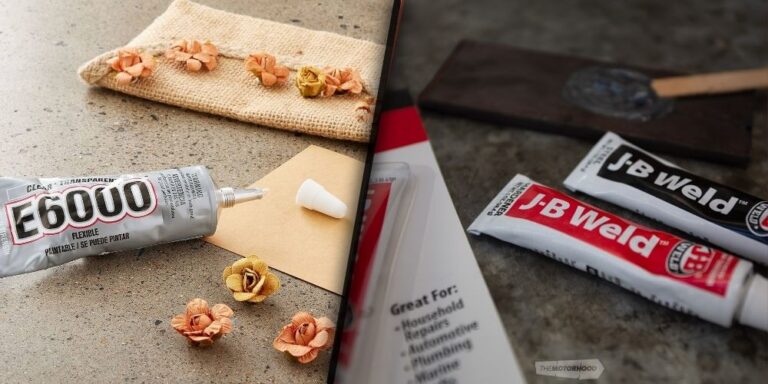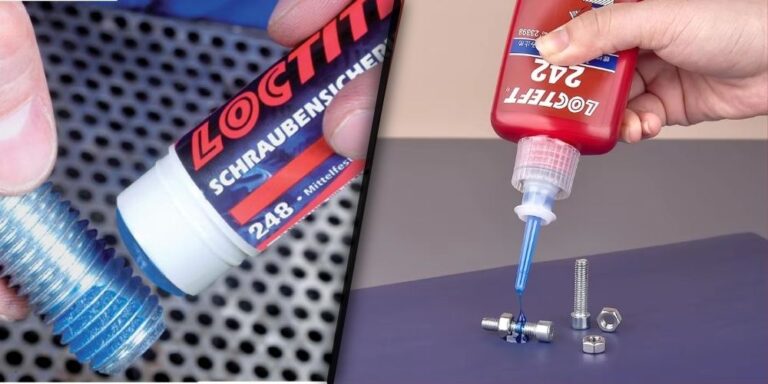JB Weld Steel Stick vs. Epoxy: Bond Battle
JB Weld Steel Stick vs. Epoxy
In examining the bond strength and application of adhesives, it is crucial to compare JB Weld Steel Stick and JB Weld Epoxy. Both of these JB Weld products offer unique benefits and considerations for those in need of reliable bonding solutions.
Understanding JB Weld Products
JB Weld Steel Stick is a hand-mixable, steel-reinforced, non-rusting epoxy putty designed for a variety of repairs. It forms an industrial-strength polymer compound when properly mixed, suitable for building up, patching, and repairing steel components. It sets in 5 minutes and is ready for machining, drilling, and painting after 60 minutes. The product boasts a strength rating of 4000 PSI and can endure temperatures up to 350°F (JB Weld).
JB Weld Epoxy (Original) features a tensile strength of 3960 PSI and is versatile across a broad range of materials and applications. It typically requires a longer curing time compared to Steel Stick, but offers a robust, lasting bond that can be relied upon for significant repair work (Quora).
Strength and Durability Factors
When comparing the strength and durability of these products, it is essential to consider their specific characteristics and applications.
| Product | Strength (PSI) | Max Temperature | Setting Time | Additional Features |
|---|---|---|---|---|
| JB Weld Steel Stick | 4000 | 350°F | Sets in 5 minutes | Drillable, tappable, machinable, paintable |
| JB Weld Epoxy (Original) | 3960 | Varies | Cures in 15-24 hours | Suits wide range of materials |
The JB Weld Steel Stick offers a slightly higher strength rating with quicker setting time, making it ideal for fast repairs on steel components. It is also highly versatile, allowing for subsequent modifications like drilling and painting within an hour of application.
On the other hand, JB Weld Epoxy provides close strength, with an extensive application range extending to various materials beyond steel. Though it has a longer curing time, it provides a solid, enduring bond suitable for substantial repair tasks.
For more comparisons and tips on adhesives, visitors can explore articles like contact cement vs epoxy, rubber cement vs contact cement, and 3m 4200 vs 5200.
Discover which JB Weld product works best for specific needs by considering factors like curing time, strength, and versatility. Stay informed and make the right choice for your repair tasks. Visit how to use jb weld steel stick and jb weld clearweld vs. original for detailed guides and comparisons.
JB Weld Steel Stick
Features and Applications
JB Weld Steel Stick is a versatile and reliable solution for various repair needs, particularly when dealing with metal surfaces. This hand-mixable epoxy putty can be used to mend holes, fractures, and joints in metals, making it ideal for applications such as automotive repairs, plumbing, and industrial fixes (Welding For Less).
| Feature | Description |
|---|---|
| Cure Time | Approx. 60 minutes |
| Full Cure | 24 hours |
| Strength | Up to 900 PSI |
| Temperature Resistance | Up to 350°F (177°C) |
| Applications | Metal, wood, plastic, acrylic |
| Color | Dark Grey |
One of the standout features of JB Weld Steel Stick is its ability to restore the functionality of broken or damaged parts, such as fixing a steering rod in a vehicle or casting a new mounting ear onto a Holley carburetor housing, which lasted for five years.
Usage Tips and Best Practices
To make the most out of JB Weld Steel Stick, follow these usage tips and best practices:
- Surface Preparation: Clean and roughen the surface where the repair will be made. Removing any grease, dirt, or debris will improve adhesion.
- Mixing: Cut off the required amount of the steel stick and knead it with your hands until it forms a uniform, dark grey color. This indicates the epoxy is activated and ready to use.
- Application: Apply the mixed epoxy to the repair area within 2-3 minutes of mixing. Shape and mold it as needed to fit the surface contours.
- Curing: Allow the epoxy to harden for at least one hour. For certain applications, post-application heat treatment at around 200°F can ensure even greater durability, a technique specified by NASA for parts supplied to them (Quora).
- Final Strength: The repair reaches its full strength within 24 hours. Once fully cured, it can be drilled, sanded, or painted.
By adhering to these best practices, users can maximize the effectiveness and longevity of their repairs using JB Weld Steel Stick. For more insights into various glue products and their applications, visit our articles on loctite 510 vs. 515, 3m 08693 vs. 08609, and fabric glue vs sewing.
JB Weld Epoxy
Composition and Properties
J-B Weld Epoxy is a versatile, hand-mixable adhesive that boasts robust bonding capabilities for various materials. The composition typically includes resin, hardeners, and metal powder. When mixed, these components create a chemical reaction that results in a strong, lasting bond. This epoxy is suitable for materials such as wood, metal, ceramics, glass, and stone (J-B Weld).
Key properties of J-B Weld Epoxy include:
- High Tensile Strength: It boasts a tensile strength of up to 3960 PSI, making it ideal for a wide range of applications (Quora).
- Durability: The epoxy creates a bond that can endure high stress and weather changes, making it reliable for long-term repairs (Welding For Less).
- Versatility: It can be used for various repair projects, including ceramics, plastics, concrete, and wood fractures.
| Property | J-B Weld Epoxy Value |
|---|---|
| Tensile Strength | 3960 PSI |
| Full Cure Time | 15-24 hours |
| Bond Type | Permanent |
| Temperature Resistance | -67°F to 500°F |
Comparison with Steel Stick
When choosing between J-B Weld Steel Stick and J-B Weld Epoxy, it’s essential to consider their unique features and optimal use cases.
- Composition: J-B Weld Steel Stick is a hand-mixable, steel-reinforced putty, while J-B Weld Epoxy is a two-part liquid adhesive that consists of resin and hardeners.
- Application: Steel Stick is particularly beneficial for hand-applied repairs where sculpting or reshaping is necessary. It is ideal for fixes requiring a structural fill. On the other hand, J-B Weld Epoxy is more suitable for creating a durable bond on flat or irregular surfaces that need a high tensile strength.
- Curing Time: Steel Stick has a fast-setting time and cures within an hour. In contrast, J-B Weld Epoxy takes 15-24 hours to fully cure, which might be a factor for time-sensitive repairs.
| Feature | Steel Stick | J-B Weld Epoxy |
|---|---|---|
| Composition | Steel-reinforced putty | Resin, hardeners, metal powder |
| Application | Structural, sculpting | Flat surface bonding |
| Tensile Strength | 900 PSI | 3960 PSI |
| Full Cure Time | 1 hour | 15-24 hours |
| Temperature Resistance | -67°F to 300°F | -67°F to 500°F |
Deciding between these two products depends on the specific repair requirements and the desired durability. For a more detailed guide on selecting the right JB Weld product, refer to our section on factors to consider. Additionally, explore application specific recommendations for a better understanding of how each product fares under different conditions.
Choosing the Right JB Weld Product
Selecting the appropriate JB Weld product for your project depends on various factors including the materials involved, the required strength, and the conditions the bond will face. Here, we cover the key considerations and offer application-specific recommendations.
Factors to Consider
Material Compatibility
Different JB Weld products offer varying compatibility with materials like metal, wood, ceramics, and plastic. Identifying the primary material of your project is crucial.
- Steel Stick: Ideal for metal repair.
- Epoxy: Versatile for multiple materials (wood, metal, ceramics, glass).
| Product | Compatible Materials |
|---|---|
| JB Weld Steel Stick | Metal |
| JB Weld Epoxy | Wood, Metal, Ceramics, Glass, Stone |
Strength Requirements
The strength needed for your project influences the choice between products.
- Steel Stick: Up to 4000 PSI.
- Epoxy: High tensile strength and versatility.
| Product | Strength (PSI) |
|---|---|
| JB Weld Steel Stick | 4000 PSI |
| JB Weld Original Epoxy | 3960 PSI |
Temperature Resistance
Evaluate the operating conditions to choose a product that can withstand extreme temperatures.
- Steel Stick: Up to 350°F.
- Epoxy: Good for standard temperature ranges.
For high-temperature applications, consider JB Weld Extreme Heat, which endures up to 2,500°F. (Extreme Heat Info)
Application Specific Recommendations
Metal Repair
For repairing metal items like pipes, engines, and tools, JB Weld Steel Stick is the best choice. It’s steel-reinforced, non-rusting, and can be machined or painted after setting.
- Setting Time: 5 minutes
- Curing Time: 60 minutes
- Strength: 4000 PSI
Multi-Material Projects
JB Weld Original Epoxy is ideal for projects involving various materials. Its tensile strength of 3960 PSI makes it suitable for a range of applications.
- Best For: Wood, metal, ceramics, glass
- Strength: 3960 PSI
High-Heat Scenarios
For applications exposed to intense heat, JB Weld Extreme Heat is designed to withstand temperatures up to 2,500°F, making it suitable for exhaust systems or engine repairs.
- Best For: High-temperature applications
- Temperature Resistance: 2,500°F
For further guidance on the best adhesives for specific applications, you might find our comparisons like loctite 510 vs. 515 and contact cement vs epoxy helpful.
By considering material compatibility, required strength, and temperature resistance, you can determine the optimal JB Weld product for your needs.
Real-Life Applications
User Success Stories
The versatility and strength of JB Weld products, particularly JB Weld Steel Stick and JB Weld Epoxy, make them popular choices for various repair tasks. Here are some real-life success stories that highlight their effectiveness:
-
Holley Carburetor Housing Repair: JB Weld Steel Stick was seamlessly used to cast a new mounting ear onto a Holley carburetor housing. The repaired part lasted for five years, enabling the vehicle to continue its operations without any issues. This demonstrates the reliability and durability of JB Weld Steel Stick in mechanical repairs (Quora).
-
1989 Ford 4×4 Steering Rod Fix: An emergency situation involving a broken steering rod on a 1989 Ford 4×4 was effectively resolved using JB Weld Steel Stick. The driver was able to continue their journey without facing a long and potentially dangerous walk back. The repaired steering rod held up through rough terrain, showcasing the strength and dependability of JB Weld Steel Stick in automotive repairs (Quora).
-
Flywheel Spline Repairs: In applications such as flywheel splines on various machinery, JB Weld products have proven successful. Certain repairs may require post-application heat treatment at around 200°F to ensure the durability and efficacy of the repair. This heat treatment requirement, specified even by NASA for parts supplied to them, establishes a high standard for application effectiveness.
Professional Applications
JB Weld products are also trusted in professional settings, including automotive, industrial, and aerospace applications. Here are some examples of professional uses:
-
Automotive Industry: Trusted for repairing automotive parts such as engine blocks, cylinder heads, and various metal components. Professional mechanics often rely on JB Weld Epoxy for its high bond strength and temperature resistance.
-
Industrial Repairs: JB Weld Steel Stick and JB Weld Epoxy are utilized in industrial environments for repairing machinery, pipes, and structural components. Their ability to withstand high pressure and temperature makes them ideal for heavy-duty repairs.
-
Aerospace: JB Weld Epoxy is used in aerospace applications, with certain repairs requiring heat treatment to meet stringent standards. This ensures that aerospace components repaired with JB Weld products can withstand the extreme conditions encountered in flight.
| Application Sector | JB Weld Product | Use Case | Success Factors |
|---|---|---|---|
| Automotive | JB Weld Steel Stick | Steering Rod Repair | Held up through rough terrain |
| Automotive | JB Weld Steel Stick | Carburetor Housing Repair | 5-year durability |
| Industrial | JB Weld Epoxy | Machinery Repairs | High bond strength, temperature resistance |
| Aerospace | JB Weld Epoxy | Component Repairs | Heat treatment for durability |
To learn more about the different JB Weld products and their specific uses, check out our related articles on:
Epoxy Versatility and Best Practices
Epoxy is renowned for its versatility and strength, making it a top choice for a variety of bonding needs. In this section, we will explore the advantages of epoxy and provide tips for using it effectively in different applications.
Advantages of Epoxy
Epoxy adhesives are highly valued due to their robust bonding properties and adaptability. They create a stronger bond compared to other types of adhesives, making them suitable for heavy-duty applications (J-B Weld). Epoxy offers:
- High Shear Strength: Epoxies connect materials with a firm grip that can endure significant force.
- High PSI Rating: Withstands high pressure, making it appropriate for projects involving wood, metal, ceramics, glass, stone, or other tough materials.
- Durability: Capable of enduring extreme stress, temperature fluctuations, and weather changes, ensuring long-lasting bonds.
| Property | Epoxy Adhesive |
|---|---|
| Shear Strength | High |
| PSI Rating | High |
| Durability | Excellent |
| Versatility | High |
Tips for Effective Applications
To achieve optimal results when using epoxy, consider the following tips:
- Surface Preparation:
- Clean and dry surfaces thoroughly to remove any dust, oil, or contaminants. Use sandpaper to roughen smooth surfaces for better adhesion.
- Mixing Ratios:
- Follow the manufacturer’s instructions carefully to mix the two components in the correct ratio. Inaccurate mixing can compromise the strength of the bond.
- Application Techniques:
- Apply the mixture evenly to ensure proper coverage. Use a spatula or brush to spread the epoxy, especially on larger surfaces. Ensure a thin layer is applied to get maximum adhesion.
- Curing Time:
- Allow adequate curing time as per the product guidelines. Some epoxies require several hours or even days to reach full strength. For urgent applications, consider fast-curing products like J-B Weld’s SuperWeld™ Light Activated Glue.
- Safety Measures:
- Wear protective gloves and work in a well-ventilated area. Epoxy fumes can be harmful if inhaled, and the adhesive can be irritating to skin.
For more on how to utilize different bonding agents effectively, refer to our comprehensive guides on liquid nails vs. pl premium and loctite 510 vs. 515.
By understanding and following these best practices, individuals can maximize the efficacy of epoxy adhesives in their projects.
